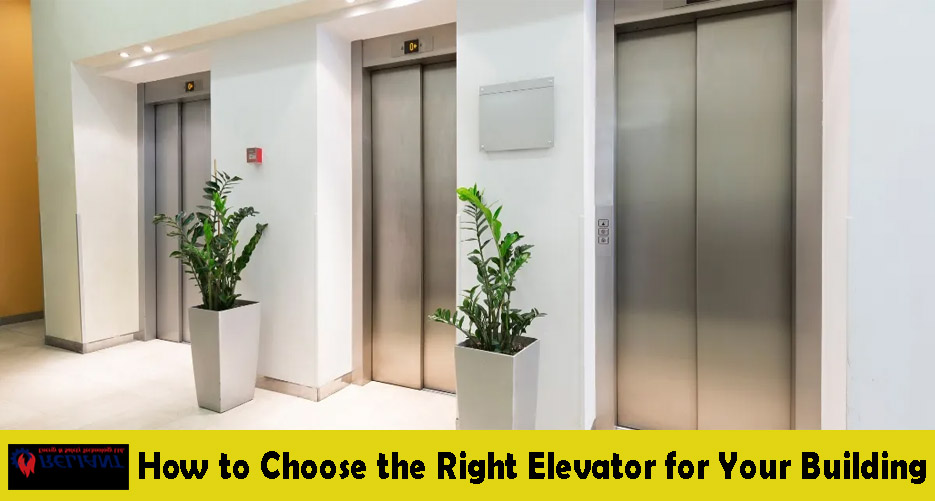Choosing the right elevator for your building is a crucial choice that affects both how well it works and how safe it is. No matter if you are a property owner, buyer, or manager, it is important to know how to choose the right elevator for your building. Elevators are more than just a way to get from one floor to another. They are an important part of a building’s infrastructure that affects how easy it is to get in and out and how energy efficient it is.
In this detailed guide, How to Choose the Right Elevator? We’ll look at the most important things to think about when making this important choice. We’ll give you the knowledge and insight you need to make an educated choice by looking at your building’s unique needs, such as traffic patterns and space limitations, as well as the latest technological advances, safety features, and environmental concerns.
By the end of this guide, you’ll know how to navigate the complicated world of elevator choices. You’ll be able to make sure that your building’s vertical transportation system not only meets but also exceeds your expectations, making the overall experience better for both people who live there and people who come to visit.
How to Select an Elevator?
When getting an elevator for your building, here are some things to think about:
1. Type of Building Matters
Choosing the right elevator depends a lot on what kind of building it is. Small homes don’t need the same kind of lift as big buildings. How well an elevator works depends on its size, how much weight it can hold, and how fast it goes. Hydraulic home lifts are made to go up and down stairs in homes. So, the choice of elevator should be based on the building’s specific needs.
2. Important requirements of use
When choosing an elevator, you should think about how often and how many people will use it. Passenger lifts are great for buildings with a lot of people going in and out, whether they are business or residential. Home lifts may be smaller and used less often, so they are good for private homes. Knowing how you plan to use the elevator can help you choose the right one for your needs.
3. Find out about the elevator companies
Research is needed to choose a reputable elevator company. You can read reviews, ask for recommendations, and compare prices and features between different companies. This will help you find the best elevator company for your needs and make an informed choice. Remember that reputation and dependability are more important than price when making your final pick.
4. set your budget
Installing an elevator can be a big investment, so you need to know how much you can spend before you make any choices. You can figure out what kind of elevator you can afford by taking into account both the original costs and the ongoing costs, like maintenance and service fees. Having a clear budget in mind also keeps you from spending too much on needless luxuries.
5. Appearance Matters
When choosing an elevator or lift, the way it looks is an important thing to think about. Choose lifts that fit in with the style of your building. Make sure that you don’t put a freight elevator in a fancy hotel entrance or a fancy elevator in a building that doesn’t need it. It’s all about putting together the right look!
Classification of Elevator
In the past, most lifts had to be run from a single room with lots of machines. Some lifts today don’t need a machine room because they have safety features built in. There are four main kinds of elevators: vacuum, hydraulic, traction, and machine room-less.
Traction elevator
The ropes on this lift go through wheels that are connected to a motor that is above the shaft. The rope’s main job is to move the elevator car up and down. It can be used in places with mid- to high-rise buildings and at much faster speeds than hydraulic lifts.
As with other types of elevators, this one has a counterweight. This takes some of the weight of the people and the car off of the motors, making it easier for them to move the lift load.
Hydraulic lift
Most hydraulic lifts have pistons at the bottom that hold them up. The goal is to move the lift car up while the electric motor moves hydraulic fluid down the piston. When the lift goes down, the valve lets oil from the piston out through the valve. This kind of elevator is usually found in buildings with two to eight floors, and it can only go as fast as 200 feet per minute.
The main reason hydraulic elevators are so popular is that they are cheaper to build and require less maintenance than other elevators.
Because hydraulic lifts use an electric motor that can work against gravity, they use more energy. You should keep an eye on your hydraulic fluid because even small leaks can cause big problems or harm the environment.
Machine room-less (MRL) elevators
Most elevators are made with a room for the machines right above where the elevator tube goes. When repair is needed, the only way to get to the machine in this type of elevator is through the top of the elevator car. This kind of lift can only go 250 feet per minute, or 500 feet.
MRL elevators are becoming more common in mid-rise buildings because they use less energy and take up less room when being built.
Home Elevator (Vacuum or Pneumatic)
Cables and pulleys are not used to move a vacuum lift. The rules of nature tell how these pneumatic elevators work. This lift device is mostly just a tube made of polycarbonate and aluminum that is sealed in a vacuum. The air underneath and above the lift car helps it move. type of lift
When you press the “up” button, the system lowers the air pressure above the tube. This makes the air pressure below the tube push the tube up. When you go down, the opposite happens: the pressure below drops, causing the elevator to go down.
Conclusion
In the end, choosing the right elevator for your building is not something to be taken easily. By carefully thinking about things like the size of the building, how it will be used, safety features, and your budget, you can make sure that your choice fits the needs of your property and its people. Putting safety, efficiency, and long-term stability first will not only improve the way your building works as a whole, but it will also make it easier and more enjoyable for the people who use it. Taking the time and making the effort to choose the right elevator is an investment in the success and longevity of your business.

